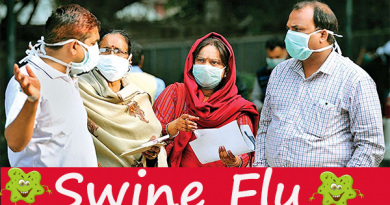What is honeycombing in the lungs – Pulmonary Fibrosis
Abstract
The human respiratory system consists of a network of tissues or organs, lungs are the primary organs of the respiratory system. Lungs are the paired organ located on either side of the heart of human beings. The prime function of the lungs involves the gaseous exchange between the atmosphere and the bloodstream, basically, oxygen is extracted and transferred into the bloodstream and in turn releasing the carbon dioxide from the blood to the external environment. But due to increased air pollution and some other factors can lead to the degradation of the normal function of the lungs. One of such diseases is pulmonary fibrosis. In this article, we’ll discuss in brief the disease and its best Ayurvedic management.

Introduction
Pulmonary fibrosis also known as honeycombing in lungs due to the radiological appearance of this disease and is defined as the condition which is characterised by presence of small cystic spaces with irregularly thickened walls composed of fibrous tissue in the lungs. Basically in pulmonary fibrosis, the tissue of lungs gets scarred, and lungs are unable to perform the normal functions efficiently. With increase in time, this condition gradually becomes worse and may ultimately lead to complete loss of function of lungs. Honeycomb cysts often predominate in the pleural/ sub pleural and peripheral regions of the lungs regardless of their cause.
Sign And Symptoms
The common clinical features of lung fibrosis include shortness of breath especially on exertion, chronic dry cough, weakness and fatigue, chest discomfort and pain in chest and back regions, loss of appetite is followed by rapid loss of weight.
On auscultation, sometimes the fine cracked during inspiration can be heard on the base of lungs.
Causes
- The causes of pulmonary fibrosis include environmental pollution, some medications, infections such as SARS infections, idiopathic pulmonary fibrosis, interstitial lung disease etc., and connective tissue diseases.
- Endogenous stimuli- dust, fumes, cigarette smoke, autoimmune conditions.
- Exogenous stimuli- drug interactions, radiations and other diseases.
Pathophysiology Of Pulmonary Fibrosis (Cause of honeycombing)
Due to the overexposure of endogenous and exogenous stimuli, leading to microscopic lung injury, separated spatially and temporally and if these injuries remain intact lead to lung haemostasis, and when healed up it leads to gradual change in lung parenchyma with fibrotic tissue leading pulmonary fibrosis, which appear as honeycombs on radiological imaging. This progressive changes in the normal lung tissue with scarred one, resulting in the reduced oxygen diffusion capacity and increase in stiffness of chest and back region.
Diagnosis
- The diagnosis of this condition may be based on symptoms, Lung function tests, medical imaging and lung biopsy.
- Honeycomb lung is the classical radiological appearance with widespread fibrosis.
- The terminal and respiratory bronchioles are dilated and thickened to produce cystic airspaces, giving this characteristic honeycomb appearance on chest x-ray.
- High resolution CT may be required for proper visualisation of the abnormalities.
Complications
If proper management of this condition is not done it may lead to many several lifethreatining complications. These include pneumothorax, lung cancer, pulmonary hypertension and respiratory failure.
Ayurvedic View
In Ayurveda, the best correlation of this disease can be made with 𝘒𝘴𝘩𝘢𝘵𝘬𝘴𝘩𝘦𝘦𝘯 𝘫𝘢𝘯𝘺𝘢 𝘴𝘩𝘸𝘢𝘴 𝘳𝘰𝘨, (respiratory disorder as a result of healed pulmonary abscess).
(Reference- Charaka Samhita Chikitsa sthana- 11/9-10)
The person who is regularly on inappropriate diet and unwholesome diet, excessive dry and following the trauma to the lungs or due to any infective cause, the vitiated tridosha got entered in the chest region causing severe pain in the chest, back and also passes blood in sputum (hemoptysis), leading to abscess formation in the lungs and also causing depletion of shukra and oaj (the supreme body tissue that can be correlated with hormones responsible for growth and reproduction and immunity) and leading to the condition called kshatksheen. This kshat ksheen, itself when healed, makes the progressive changing of normal to fibrosed tissues in the lungs leading to pulmonary fibrosis condition.
The person who is regularly on inappropriate diet and unwholesome diet, excessive dry and following the trauma to the lungs or due to any infective cause, the vitiated tridosha got entered in the chest region causing severe pain in the chest, back and also passes blood in sputum (hemoptysis), leading to abscess formation in the lungs and also causing depletion of shukra and oaj (the supreme body tissue that can be correlated with hormones responsible for growth and reproduction and immunity) and leading to the condition called kshatksheen. This kshat ksheen, itself when healed, makes the progressive changing of normal to fibrosed tissues in the lungs leading to pulmonary fibrosis condition.
The common symptoms of kshatksheen include
(Reference- Charka Samhita Chikitsa sthana 11/13)
𝘜𝘳𝘰𝘳𝘶𝘬- Pain in chest, Shonitchardi- haematemesis, Kaaso-cough, due to the pulmonary abscess (𝘶𝘳𝘢𝘩𝘬𝘢𝘴𝘩𝘵), and also the generalised symptoms such as 𝘚𝘳𝘢𝘬𝘵𝘮𝘶𝘵𝘳𝘢𝘵𝘷𝘶𝘮- Haemeturia, 𝘱𝘢𝘳𝘴𝘩𝘢𝘷𝘱𝘳𝘪𝘴𝘩𝘵𝘬𝘢𝘵𝘪𝘨𝘳𝘦𝘩- stiffness in chest, back and lumbar region and weight loss.
The bleeding when the tissue becomes fibrosed decreases but it leads to the gradual increase in breathing difficulty, exertional dyspnea and other such symptoms.
Treatment
Planet Ayurveda is the best emerging manufacturing hub which is gradually becoming the global distributor of herbal formulations that are being made on ancient ayurvedic principles. The products that are manufactured here are under the strict supervision of our expert team of ayurvedic doctors and are made with ancient time tested formulas.
Best Herbal Remedies as Suggested by Our Experts For Pulmonary Fibrosis
- Praanrakshak Churna
- Vasaka Capsule
- Tulsi Capsule
- Shwas kuthar ras


Product Description
1. Praanrakshak Churna
This is a poly herbal prepration made by Planet Ayurveda’s team on the ancient Ayurvedic principles. The shwas roga have prodominaece of kapha and vata dosha. This churna is very much efficient in screeching out the collected kapha dosha along with the soothing effects on the vata dosha. The product is having expectorant and properties to enhance the lung functions. The ingredients of this formulation include Sirisha (𝘈𝘭𝘣𝘪𝘻𝘪𝘢 𝘭𝘦𝘣𝘣𝘦𝘤𝘬), mulheti (𝘎𝘭𝘺𝘤𝘺𝘳𝘳𝘩𝘪𝘻𝘢 𝘨𝘭𝘢𝘣𝘳𝘢) and kantakari (𝘚𝘰𝘭𝘢𝘯𝘶𝘮 𝘹𝘢𝘯𝘵𝘩𝘰𝘤𝘢𝘳𝘱𝘶𝘮) etc.
Dosage- 1 teaspoon twice daily with equal amount of honey, after meals
2. Vasaka Capsules
These are the standardized extract of the vasa (𝘈𝘥𝘩𝘢𝘵𝘰𝘥𝘢 𝘷𝘢𝘴𝘪𝘤𝘢). Vasa is an amazing rejuvenating herb that helps in the prevention of infections of lungs and promoting the health of the lungs, it helps in getting rid of the excess congestion in the chest and also improves digestion. This herb enhances the blood purifying ability, and boosts up the immunity. These all factors make them both suitable and one of the best ayurvedic medicines for pulmonary fibrosis.
Dosage- 1 capsule two times daily with water after meals
3. Tulsi Capsules
Tulsi Capsules are made from the standardized extract of Ocimum sanctum. Tulsi is the best remedy to treat the respiratory difficulties used since ages. Moreover, tulsi is the abundant source of antioxidants such as eugenol that protects the lungs from free radicals. Due to its kapha shamak property, it aids in relieving the symptoms of pulmonary fibrosis.
Dosage- 1 capsule twice daily with water after meals
4. Shwas kuthar Ras
The classical Ayurvedic formulation used for the shwas roga (respiratory ailments). This medicine is useful in chronic breathing difficulties and dyspnea on exertion along with the stiffness issues in the lungs. Shwas kuthar ras is the best herbomineral preparation for dissolving the fibrosed tissue (due to kapha) and helps in promoting the normal lung functions.
Dosage- 2 tablets twice daily after meals, for better results crush the tablets in half teaspoon of ginger juice, and consume it with 1 teaspoon of honey.
Conclusion
There is no treatment method available with the Allopathic medicine for this condition, they mostly focus on symptomatic treatment (pulmonary rehabilitation or oxygen therapy), whereas Ayurveda with an integrated approach of lifestyle and dietary modification along with the herbal formulations is the best way to manage the condition of Pulmonary fibrosis.




